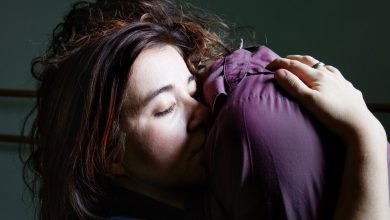My Head Is Always Cold. Can I Wear Hats Indoors?

Come winter, my extremities are always cold. This isn’t really a problem, except for my head. At home, I wear a hoodie or sometimes a wool babushka. But what to do at work or other indoor public places? What is the etiquette of hats indoors? — Patricia, Manchester Township, N.J.
To wear or not to wear a hat indoors was once a very simple question. For men, a fedora or trilby was an outdoor accessory for commuting between home and office. Once inside, they removed it immediately. For women, a hat worn as part of an outfit was allowed to stay on the head pretty much always, in part out of sensitivity to the hat-head hairdo problem; in part out of recognition that a hat is part of a look, like a necklace or shoes; and in part because, well, you try putting on a fascinator and taking it off at will.
However, as the rules about when to wear a hat became fuzzier — like pretty much every dress code rule — the generally accepted default became no hats at the dinner table, but maybe hats everywhere else (except during the national anthem). Indeed, these days the question is less about whether you ought to wear a hat indoors, and more about what hat, exactly, can you wear?
I think the answer largely comes down to the usual issue of personal freedom vs. the social contract. You are always balancing your own needs (head warmth!) and desires (I like the look!) with those of others. To wit: a wide-brimmed hat, or even a homburg, could pretty easily get in someone’s way at a dinner party if, say, the seats were close and you turned your head too fast. Any headgear that shades or otherwise hides the eyes is not great in a social situation. And if you are around those from an earlier generation who might take offense at an inside hat, perhaps suffering the inside chill is, on balance, worth it so as not to suffer the emotional chill that could result.
Still, while a study published in The British Medical Journal disproved the myth that we lose 40 percent of our body heat through our heads (the study said it’s more like 10 percent, which corresponds to the head-to-body surface ratio), it is also true that an exposed head can feel uncomfortably cold. So, all the above etiquette accepted, what to do?
If you want to test the waters, a beanie is probably the safest bet — in part because it is the least intrusive and least fussy type of hat. You could always try calling beanies “head blankets” instead and see if that helps reframe the conversation. I have a colleague who often wears a little black beanie at work with her wide trousers and cropped jackets, and she looks awfully cool. Rihanna wore hers to the Met Gala in 2021 and made best-dressed lists everywhere.
But there is another solution that avoids the question entirely. What is this miracle item, you ask?
The knit ear-warmer.
A cross between a very thick headband and a beanie, often in cashmere or wool, it is a hybrid invention covering a large part, though not all, of the head. (Hybrid inventions, such as the shacket and the coatigan, are pretty much my favorite fashion things.) The ear-warmer is the equivalent of cozy slipper-socks, but for the other end of the body, and thus solves both the warmth and etiquette issue — as well as a host of other potential quandaries.
Plus, ear-warmers often look vaguely like a fortune teller’s scarf, with a knot at the crown, giving you a sort of mysterious air and offering a potential conversation starter. If you are feeling crafty, there are lots of patterns available online. And if you are running out of stocking stuffer ideas, they’re always a good option.
Your Style Questions, Answered
Every week on Open Thread, Vanessa will answer a reader’s fashion-related question, which you can send to her anytime via email or Twitter. Questions are edited and condensed.



